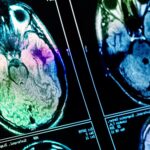A new study offers a look at the ripple effects of parental mental health conditions on children, revealing a broad spectrum of risks that extend beyond the same psychiatric conditions that afflict their parents. The study, published in the American Journal of Psychiatry, demonstrates that children with parents diagnosed with one of six major psychiatric conditions are at increased risk for a wide range of psychiatric and non-psychiatric outcomes.
Despite this, the majority of these children do not receive a psychiatric diagnosis in specialist care by mid-adulthood, suggesting that many factors may mitigate the potential impacts of having a parent with a mental health condition.
Mental health issues tend to run in families. Previous research has shown that children of parents with mental health disorders are more likely to develop similar conditions themselves. However, most studies have been narrow in scope, often focusing on severe conditions like schizophrenia or bipolar disorder, or examining only one outcome at a time. This has left significant gaps in our understanding of how parental psychiatric conditions might affect a broader range of outcomes in children, both psychiatric and nonpsychiatric.
There is a need for a more comprehensive understanding of how parental mental health affects children across a broad range of outcomes, including behavioral, psychosocial, and cognitive domains. This study aimed to fill that gap by using extensive Swedish national register data to examine the associations between six parental psychiatric diagnoses and 32 different outcomes in their offspring.
“Children born to parents with a mental illness have been shown to be at an increased risk of developing mental health problems early in life. However, many studies have focused on parental severe mental illness because of the significant impairment associated with these disorders, less attention has been paid to more common disorders, despite their higher prevalence,” said study author Mengping Zhou, a PhD student in the Department of Medical Epidemiology and Biostatistics at Karolinska Institutet.
“Our study aims to supplement our knowledge and understanding of intergenerational transmission, not only by studying associations of parental diagnoses with rates of diagnoses and mental health issues among the offspring but also by including other behavioral outcomes, such as criminality, suicide, and aspects of psychosocial functioning, namely, school and labor performance.”
The study was based on a population-wide cohort of over three million individuals born in Sweden between 1970 and 2000. By linking several national registries, researchers could track these individuals from birth to middle adulthood, providing a comprehensive view of their psychiatric, behavioral, and cognitive outcomes. The study focused on children with parents diagnosed with one of six major psychiatric conditions: schizophrenia, bipolar disorder, depression, anxiety, alcohol-related disorder, and drug-related disorder.
For each child exposed to a parental psychiatric diagnosis, the researchers matched 10 children from the general population who did not have a parent with that particular diagnosis. This matching allowed the researchers to compare outcomes across children of similar age, parental background, and birth conditions, minimizing the impact of potential confounding factors.
To measure the offspring’s outcomes, Zhou and her colleagues considered 32 different outcomes categorized into six broad groups: psychotic-like outcomes (such as schizophrenia and bipolar disorder), neurodevelopmental outcomes (like attention deficit hyperactivity disorder and autism spectrum disorder), internalizing outcomes (such as anxiety and depression), externalizing outcomes (like substance use disorders and criminality), accidents and behavioral outcomes (including suicide and violent victimization), and school and labor performance outcomes.
They used advanced statistical models to estimate both the absolute risk (the likelihood of the outcome occurring) and the relative risk (the difference in risk between children with and without an affected parent).
The absolute risk data indicated that most children with parents who had psychiatric diagnoses were not themselves diagnosed with a psychiatric condition in specialist care by age 44. Depending on the parent’s diagnosis, between 22% and 25% of these children were diagnosed with one of the 16 psychiatric conditions considered in the study. This suggests that while these children are at higher risk than their peers, the majority do not receive psychiatric diagnoses in specialist care.
“Not all children with a genetic predisposition for mental illness fall ill; in fact, many of these children stay well, at least in terms of not being diagnosed,” Zhou told PsyPost.
However, when looking at relative risks, the picture becomes more concerning. Children with parents diagnosed with any of the six psychiatric conditions were at significantly higher risk for all 32 outcomes compared to their peers. This suggests that the transmission of psychiatric risk from parent to child is largely transdiagnostic, meaning it cuts across specific diagnoses and affects a wide range of psychiatric, behavioral, and psychosocial outcomes.
For example, children with parents diagnosed with schizophrenia or bipolar disorder were at especially high risk for developing psychotic-like outcomes themselves. Similarly, parental substance-related disorders were the strongest predictors of externalizing behaviors, accidents, and poor school and labor performance in offspring. The study also found that children with two affected parents were at even higher risk than those with just one, highlighting the potential compounding effects of parental psychiatric diagnoses.
“Our study found that most children who grew up with parents with mental health issues were free from the same issues as they reached middle adulthood,” Zhou explained. “However, these children still face higher possibilities of experiencing not only mental health issues, but also poor school and work performance, and even some serious behaviors such as suicide and victimization.”
One limitation is that it relied on clinical diagnoses recorded in specialist care settings, which means the absolute risks reported may be underestimates. Many individuals with psychiatric conditions, especially those with milder forms, may receive treatment exclusively in primary care settings or not seek treatment at all. As a result, the study may have missed cases where children did have psychiatric conditions but were not captured in the data.
Looking forward, future research could focus on understanding the mechanisms underlying this transdiagnostic transmission of risk. For instance, it would be valuable to explore the role of genetic, environmental, and psychosocial factors in this process.
Understanding how these factors interact could help develop targeted interventions to mitigate the risks for children with parents who have psychiatric diagnoses. Additionally, research could explore the potential protective factors that allow the majority of these children to avoid receiving psychiatric diagnoses in specialist care, despite their elevated risks.
Zhou hopes “to provide suggestions for preventive strategies and early intervention approaches that could have a positive impact on these children who grew up with parents with mental health issues.”
The study, “Psychiatric Diagnoses in Parents and Psychiatric, Behavioral, and Psychosocial Outcomes in Their Offspring: A Swedish Population-Based Register Study,” was authored by Mengping Zhou, Christine Takami Lageborn, Arvid Sjölander, Henrik Larsson, Brian D’Onofrio, Mikael Landén, Paul Lichtenstein, and Erik Pettersson.




